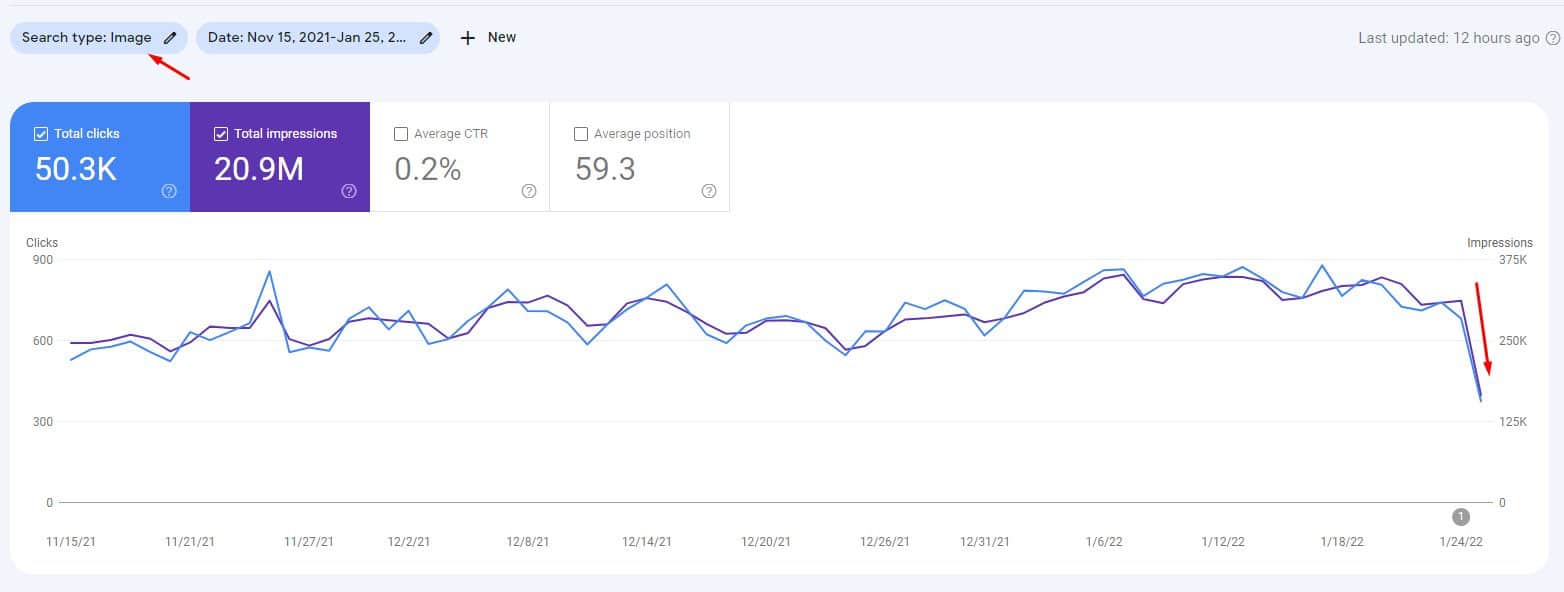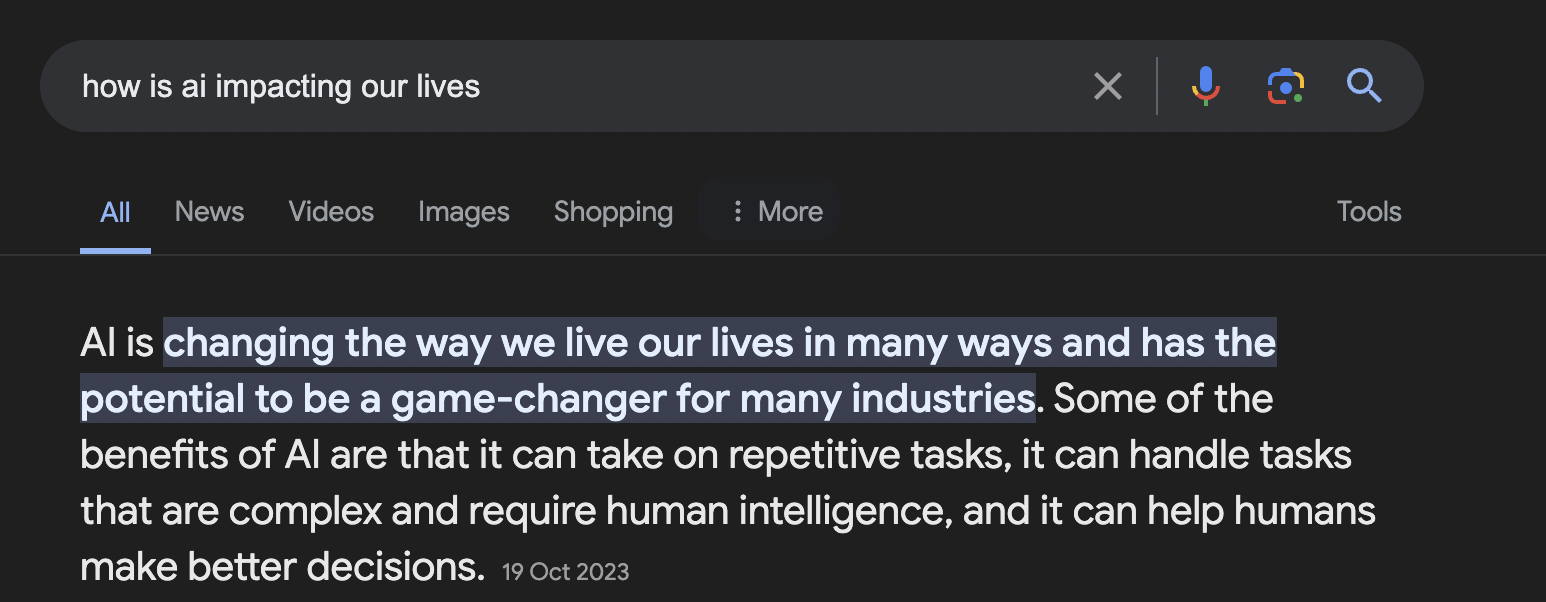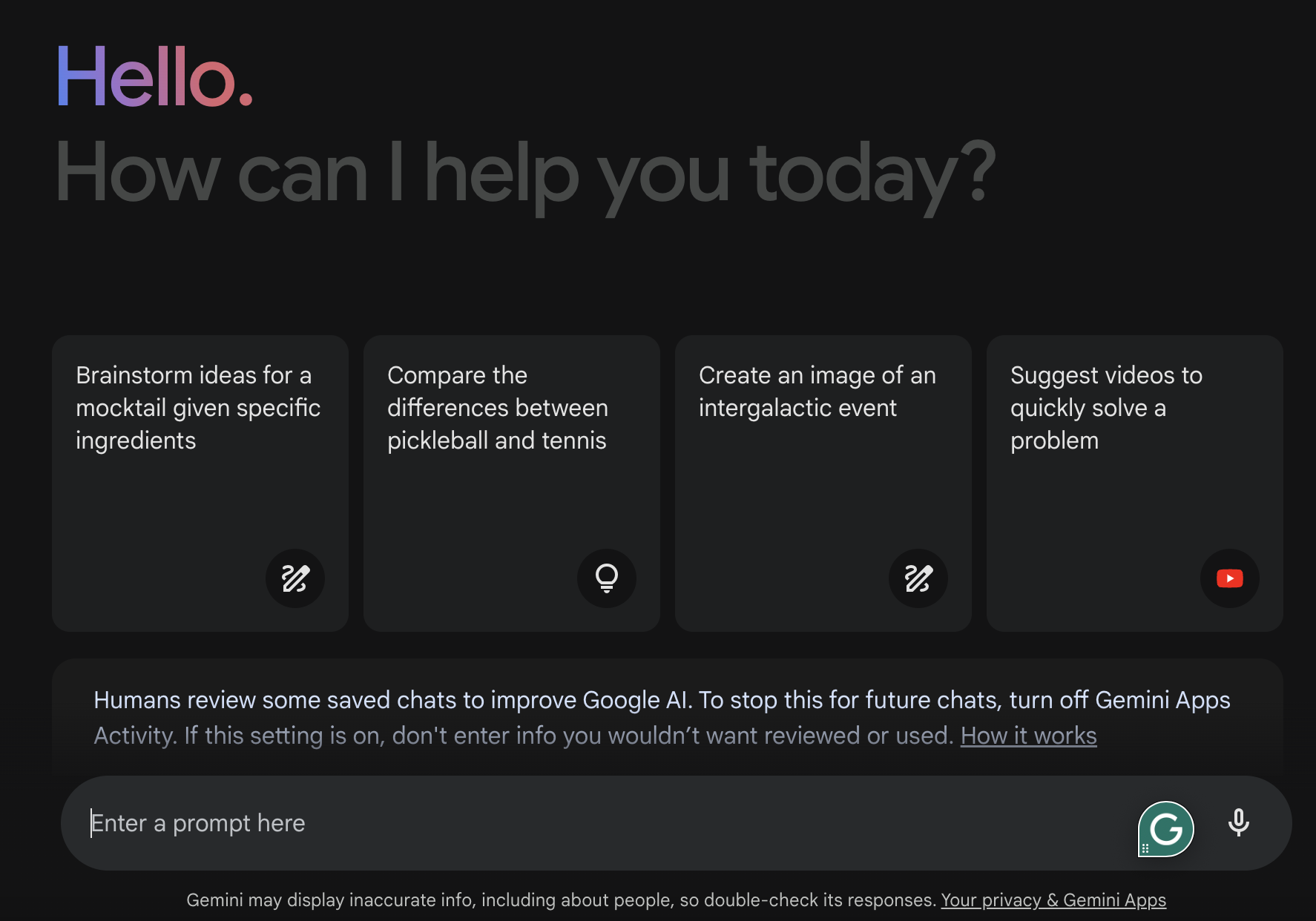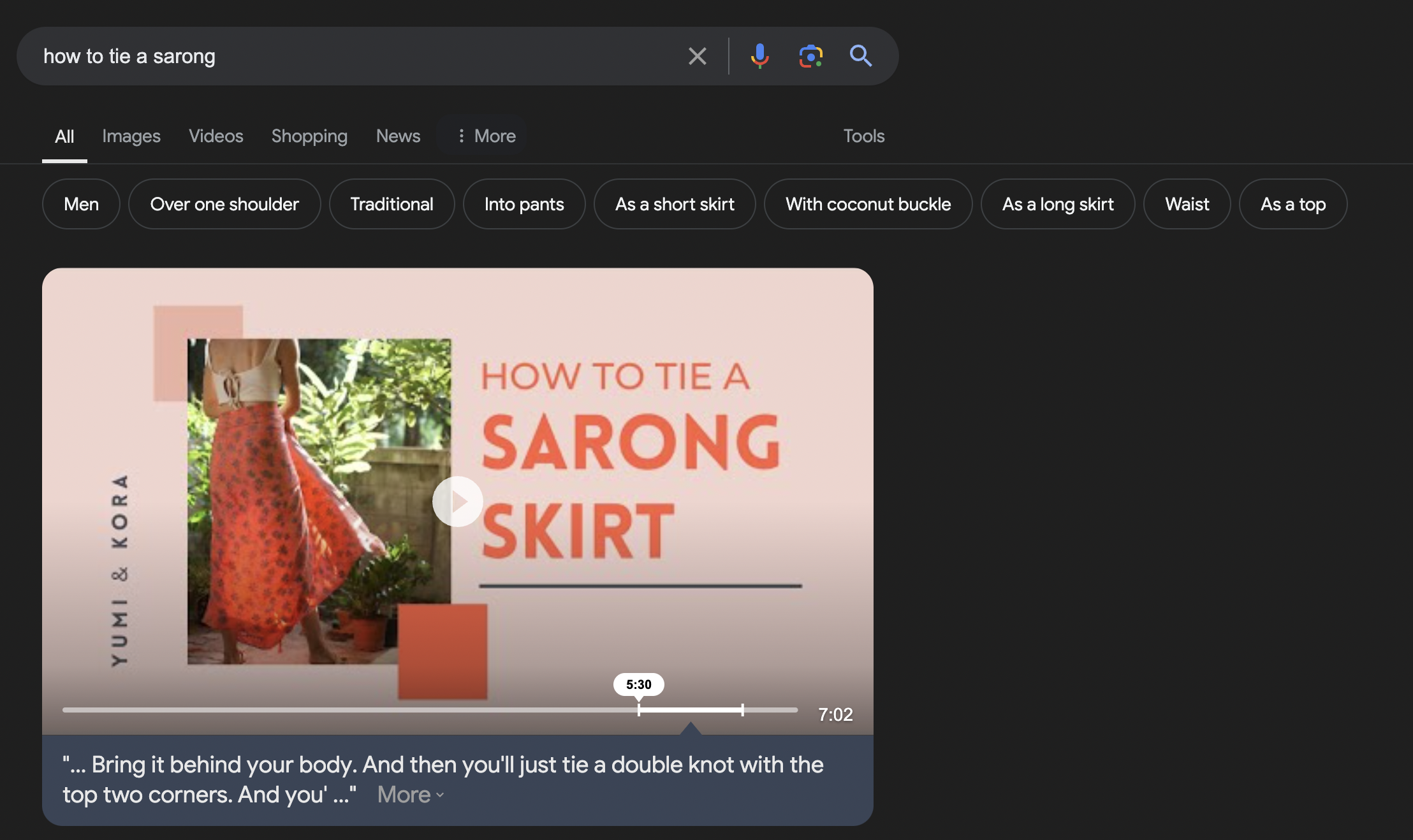
In 2024, many website owners and digital marketers are witnessing a noticeable decline in organic traffic. And if you’re reading this, there’s a good chance you might be experiencing this issue too.
As is often the case with marketing, this challenge stems from multiple compounded factors: evolving search engine algorithms, increasing competition, and changing user behaviors.
Google’s latest updates, particularly the March 2024 Core Update, have had a significant impact, deindexing numerous websites that fail to meet the new standards for content quality and authenticity, but there are other reasons that would be impacting your traffic.
As search engines refine their methods for delivering the most relevant and valuable content to users, understanding the reasons behind these traffic drops and adapting accordingly is essential for maintaining visibility and engagement online.
This article explores the primary factors contributing to the decline in organic traffic and offers insights into how websites can recover and thrive in this dynamic digital landscape.
Table of Contents
Reason 1: Google’s Algorithm Updates
Probably the primary reason for the noticeable decline in organic traffic is the significant impact of Google’s algorithm updates.
The most impactful update this year has been the March 2024 Core Update, which has introduced substantial changes to how Google indexes and ranks websites, focusing on improving the quality of search results by targeting low-quality and AI-generated content.
This update has led to the deindexing of hundreds of websites that relied heavily on AI-generated spam and low-quality content. The goal of this update is to prioritize high-quality, human-generated content and to provide users with the most relevant and valuable information

The update has seen a substantial number of websites being completely removed from Google’s search index. Websites that were identified as using AI tools to generate content at scale, primarily for manipulating search rankings without providing real value to users, were hit the hardest.
This has resulted in a significant loss of organic traffic and advertising revenue for these websites. Google’s stance is clear: while AI can be a tool for content creation, its misuse for generating low-quality content will not be tolerated.
What can you do to comply with Google’s new standards?
To align with Google’s new standards and recover from the traffic losses caused by the March 2024 Core Update, website owners need to focus on several key strategies:
- Improve content quality: Ensure that all content is informative, well-researched, and genuinely useful to users. Avoid thin, superficial content and focus on in-depth, high-quality articles that meet the search intent of your audience.
- Audit and update existing content: Conduct a thorough audit of existing content to identify and remove or update low-quality pages. Consolidate similar pages to create comprehensive resources on specific topics.
- Focus on user experience: Enhance the overall user experience by improving site speed, mobile usability, and navigational structure. A positive user experience can help improve rankings and retain traffic.
- Stay updated with SEO best practices: Needless to say, invest time on monitoring changes in Google’s algorithms and adjust SEO strategies accordingly. Use reliable SEO tools to track performance and identify areas for improvement.
Section 2: Zero-Click Searches
Zero-click searches have become a significant headache for website owners seeking to maintain and grow their organic traffic.

Zero-click searches are search results that satisfy the user’s query directly on the search engine results page (SERP), often through features like featured snippets, knowledge panels, and instant answers. According to a study by SparkToro, nearly 65% of Google searches ended without a click to another web property in 2020, and this trend has continued to grow.
The impact of zero-click searches is evident for website owners:
- Reduced CTR: As more information is displayed directly on the SERP, fewer users are clicking through to websites, leading to a decrease in organic traffic.
- Visibility challenges: Even if a website ranks well, its visibility and traffic can be diminished if users find what they need without clicking through.
How to optimize content for zero-click searches?
To benefit from zero-click searches rather than be negatively impacted by them, website owners can employ several strategies:
- Identify snippet opportunities: Use SEO tools to find queries where your site already ranks on the first page but does not currently hold the featured snippet.
- Format content appropriately: Structure content to answer questions concisely and clearly. Use headings, bullet points, and lists to increase the chances of being selected for a featured snippet.
- Answer related questions: Create comprehensive content that answers related questions, increasing the likelihood of capturing multiple snippets.
- Implement structured data: Use schema markup to help search engines understand your content better. This can improve the chances of your content appearing in rich results, such as knowledge panels and instant answers.
Section 3: Generative AI in Search
Generative AI, such as OpenAI’s ChatGPT, Google Gemini, and Microsoft’s integration of AI in Bing, is transforming the way users interact with search engines.

Generative AI has introduced a more conversational approach to search. Instead of offering a list of links for users to browse, AI models can deliver direct answers, summaries, and even engage in dialogue to refine responses further.
This new method of search interaction has several implications. Firstly, AI can provide detailed responses to complex queries, reducing the need for users to visit multiple websites to gather information. Secondly, AI can tailor responses based on user context and preferences, offering more relevant and customized information. And lastly, users can engage in longer interactions with AI to explore topics in depth, potentially replacing some traditional search engine use.
As AI delivers more comprehensive answers directly within the search interface, fewer users may click through to external sites, leading to reduced click-through rates. Websites must now compete not only with each other but also with AI-generated content that appears directly on the search results page.
This shift requires content creators to adapt their strategies to remain visible and relevant in an AI-driven search environment.
How to adapt content for AI-driven search tools?
To stay competitive, websites must adapt their content strategies to work effectively with AI-driven search tools. Here are several strategies to consider:
- Focus on high-quality, authoritative content: Ensure that content demonstrates expertise, authoritativeness, and trustworthiness. High-quality and comprehensive content is more likely to be sourced and referenced by AI models, as it seeks to provide complete answers.
- Use natural language: Write content in a conversational tone that mirrors how people speak and ask questions. This makes it easier for AI to parse and use the information.
- API Integrations: Explore opportunities to integrate with AI platforms and tools. Providing your data or content directly to these platforms can increase visibility and drive traffic from AI interactions.
- Video and audio content: AI can process and generate content in various formats. Investing in video and audio content can enhance your visibility in an AI-driven search environment, which leads us directly to…
Reason 4: Importance of Video Content
The rising preference for video content is significantly affecting organic traffic to traditional websites. As more users turn to platforms like YouTube, TikTok, and Instagram for their content consumption, there is a notable shift in how businesses must engage with their audiences to maintain organic traffic.
This surge in demand for visual and interactive content means that users are spending more time on video-centric platforms, reducing the traffic flow to traditional text-based websites. As a result, businesses that fail to incorporate video are seeing a decline in organic traffic as users flock to richer, more interactive forms of media.

The increased consumption of video content is not just a trend but a fundamental change in user behavior. This change compels businesses to adapt by integrating video into their digital marketing strategies to capture and retain audience attention.
As technology advances, the future of video content looks promising. Innovations like live streaming, virtual reality and augmented reality are set to offer even more immersive experiences. Brands that stay ahead of these trends and integrate these technologies into their video content strategies will likely see significant benefits in terms of engagement and organic traffic.
How to leverage video for better SEO?
Incorporating video into your overall content strategy can enhance user engagement and improve your site’s SEO performance. We have a full guide on video SEO, but to summarize what you can do:
- Optimize video titles and descriptions: Creating engaging and SEO-friendly titles and descriptions is crucial for video content. Titles should be compelling and include primary keywords that reflect the content of the video. Descriptions should provide a detailed summary of the video content and include secondary keywords, links to your website, and timestamps for easy navigation. This helps search engines understand the context of your video and improves the likelihood of it appearing in relevant search results.
- Use transcripts and captions: Adding transcripts and captions to your videos enhances accessibility and provides additional text for search engines to crawl. This will also make your content more accessible to a wider audience, including those with hearing impairments or those who prefer to watch videos without sound. Transcripts help in capturing long-tail keywords too, further boosting your SEO efforts.
- Leverage video embeds on your website: Embedding videos on relevant pages of your website can significantly boost engagement and reduce bounce rates. Videos keep visitors on your page longer, which positively impacts your search engine rankings.
- Promote videos on social media: Sharing your videos across social media platforms can drive traffic back to your website. Social signals, such as likes, shares, and comments, can indirectly influence SEO by increasing the visibility and reach of your content. Additionally, platforms like YouTube allow you to include links in the video description, driving traffic to your website.
Reason 5: Competition and User Intent
As if that wasn’t enough, the digital landscape is becoming more competitive than ever.
As more businesses recognize the value of an online presence, the competition for top spots in search engine results pages (SERPs) has intensified.
The adoption of comprehensive SEO strategies, including technical SEO, on-page optimization, and high-quality backlink building, is now commonplace. Businesses are using tools like Ahrefs, SEMrush, and Moz to gain insights into their competitors’ strategies and identify opportunities for improvement. This has raised the bar for all players in the market, making it essential to continuously refine and enhance SEO practices to stay competitive.
How to avoid losing organic traffic to competitors?
- Conduct thorough competitor analysis: Use SEO tools to monitor competitors’ strategies, including keyword targeting, backlink profiles, and content performance. Identify gaps in your competitors’ content and exploit them by creating superior, more comprehensive content on those topics.
- Build high-quality backlinks: Develop a robust backlink strategy that focuses on acquiring links from reputable and relevant websites. Guest blogging, influencer outreach, and PR campaigns can be effective methods. Monitor your backlink profile to ensure you maintain a healthy link profile and disavow any harmful links.
- Engage with your audience: Use social media and community engagement to build a loyal audience and drive traffic to your website. Active participation in relevant online communities can boost your visibility. Encourage user-generated content, such as reviews and testimonials, which can enhance trust and engagement.
Maximize Conversions from Organic Traffic with Pathmonk
Given the reduction in organic traffic caused by changing algorithms and rising competition, enhancing the conversion rate of your existing visitors is critically important.
Pathmonk uses artificial intelligence to predict visitor behavior and identify potential friction points that could hinder conversions. By analyzing user interactions in real-time, Pathmonk delivers personalized experiences that guide visitors toward conversion, whether that means making a purchase, signing up for a newsletter, or completing any other desired action.
These experiences are tailored based on the visitor’s behavior and preferences, showing them relevant content and offers at the right time. This dynamic personalization can lead to a significant increase in conversion rates, often boosting them by over 50%.
Key features of Pathmonk include:
- AI-powered personalization
Pathmonk’s AI engine dynamically adjusts the website experience to match individual user preferences. This ensures that visitors encounter the most relevant experiences, making them more likely to convert. For example, a returning visitor might see different promotions compared to a first-time visitor, enhancing the relevance of the content they are shown.
- Behavioral insights and analytics
The platform provides comprehensive insights into user behavior, helping businesses understand how visitors interact with their site. This includes detailed analytics on where visitors drop off in the conversion funnel, allowing for targeted improvements. Pathmonk’s predictive analytics can forecast user behavior and suggest proactive optimization strategies.
- Easy integration and setup
Pathmonk is designed to integrate seamlessly with existing websites and e-commerce platforms. Its plug-and-play setup means businesses can start optimizing their conversion rates quickly without needing extensive technical support. This ease of use allows for real-time updates and continuous optimization without significant downtime or resource allocation.
- Cookieless technology
Pathmonk’s cookieless technology ensures user privacy while still providing personalized experiences. This is increasingly important as privacy regulations become stricter and users become more concerned about their data security. By using advanced machine learning algorithms, Pathmonk can personalize user interactions without relying on cookies, ensuring compliance with privacy laws while still optimizing conversion rates.
Increase +180%
leads
demos
sales
bookings
from your website with AI
Get more conversions from your existing website traffic delivering personalized experiences.

Even if your organic traffic is decreasing, Pathmonk ensures that you maximize the value of the traffic you do receive. By turning more visitors into customers, Pathmonk helps you make the most of your marketing efforts, improving ROI and driving higher revenue from existing traffic.
If you want to give Pathmonk a go, you can:
- Try our interactive personalized demo (it’s free and doesn’t involve Sales calls 😉)
- Book a product tour with our team (recommended if you want to know more about the product)
- Or directly set up your account and start boosting your conversions (perfect for busy marketers that know what they need)





